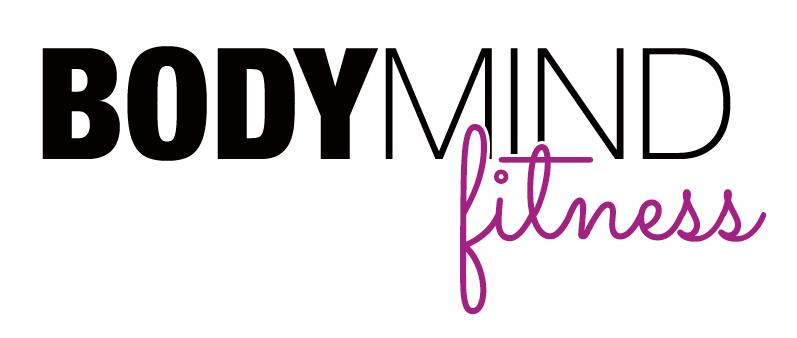Pelvic Organ Prolapse (POP) can be a scary diagnosis, and often leads women to think that they need to put their heavy lifting and high impact exercise aside because of discomfort or scared they're going to make it worse. Understandably so, since it's been identified as a potential risk factor especially when prolapse was diagnosed alongside with vaginal birth.
If you're looking to learn about Pelvic Organ Prolapse, you won't find that here. But I have you covered with a past blog post - just click here and it's take you straight to it.
Perhaps shockingly though, up to 31% of women are affected by Pelvic Organ Prolapse according to a recent study (Bo et al., 2023) - which is a huge percentage in my opinion and can affect the standard of living for many women. The most common symptoms are the feeling of vaginal heaviness, bulging or feeling like something's coming out of the vagina.
A recent survey reported that there was no significant association between exercise and symptoms of prolapse in women who exercised recreationally.
With all of this said, there are many benefits of regular exercise for not only your overall health, but as a conservative treatment for prolapse, and that's what we're here to talk about today. And here are my top 6 tips for getting started or getting back to your regular scheduled exercise routines when dealing with prolapse.
1) Visit your friendly neighborhood Pelvic Floor Physiotherapist or Physical Therapist.
When the average person thinks about pelvic health, their mind automatically goes to Kegels. But it's so much more than that. A Pelvic Floor PT specializes in symptoms related to Pelvic Floor Dysfunction (note: I hate the term dysfunction, but that's what it's called at the time of writing. I hope one day change this will change). They can thoroughly assess your pelvic floor taking a look at your posture, breathing patterns, abdominal strength and the movements that may be contributing to your prolapse.
Having this knowledge can increase your self-awareness of the things you do in everyday life that may be contributing to your symptoms. Couple that with a custom pelvic floor exercise and rehab program and you'll improve your confidence, overall strength, and bring joy to your exercises again or for the first time! I've worked alongside many Pelvic Floor PTs locally and around the world to help provide students and clients with the perfect program tailored to your unique needs with strategies to help manage your symptoms of prolapse effectively.
2) Managing Intra-Abdominal Pressure (IAP)
The key to exercising with Prolapse is managing Intra-Abdominal Pressure, which is the pressure that naturally happens in the body when we do hard things. This often takes a little trial and error, exploring posture, breathing techniques, load, and intensity - because truth be told everyone's symptoms are unique to the individual (that's you!). When we find that sweet spot, where you have no symptoms this becomes our starting point, and we train there for awhile, gradually increasing the intensity as your symptoms allow. This is also known as progressive loading.
3) Breathe and Release!
Your diaphragm, pelvic floor and abdominal wall work together to predict every single movement your body makes, from lifting your arm overhead to running, jumping, laughing, sneezing, coughing. Together they form a unit called the Core 4 or the Core Cannsiter. Many know that the diaphragm is a breathing mucle, but what you may not know is that the pelvic floor is also a breathing muscle, and when the two are aligned (think posture), together they move breath in and out of the body. When you breathe in, the pelvic floor naturally descends, expands and widens (try not to bear down). And when you breathe out, your pelvic floor naturally draws in and rises back up (no Kegels required - it's natural meant to do this).
When dealing with prolapse, it's common to tense up or grip our abdominal muscles and/or pelvic floor to help stop anything from "falling out" and this leads to shallow breathing patterns, making it difficult for the diaphragm and pelvic floor to do their job. This can then lead to more feelings of heaviness and pressure. Try to focus on breathing into the back and sides of the rib cage, as well as the front (known as 360° Breathing), letting go of as much tension as you can with that breath in. This will allow your pelvic floor to do its job, and move perfectly to support you in your exercises, and mange your POP symptoms.
4) Learning to Reset your Pelvic Floor.
While the goal is to exercise within a range where you aren't feeling any symptoms, there are times where you may still feel that "heaviness". Pelvic Floor positions that encourage a release are great for resetting the pelvic floor and reducing your prolapse symptoms. If you notice heaviness or pressure after exercise or after a long day on your feet try laying on your back with either knees bent and feet on the floor, or with legs up the wall, and put a yoga block or cushion underneathe your pelvis. Practice some long breaths in, and as you breathe out let go of the muscles around your pelvis and release into the full support of the block or cushion. You can stay in this position until you feel relief (usually 5-10 minutes will do the trick).
5) Gradually Building Up to Impact.
Once you learn how to manage load, and Intra-Abdominal Pressure, you can start playing around with impact. As always, try your best to stay in the zone where you're feeling no pelvic floor or prolapse symptoms, but in the event you do - use it as a learning opportunity. You can start with exercises like inclined burpees (with a heel raise instead of a jump), then moving into small jumps or hops, into jumping and then running (keeping in mind all of those strategies that you've developed so far).
Working with a Pelvic Floor PT and/or a personal trainer who specializes in pelvic health can help support you through these progressions and more options when the time is right.
6) Consider using a Pessary.
Vaginal support pessaries are devices placed into the vagina to provide additional support and reduce symptoms of prolapse. Please see a Pelvic Floor PT for a fitting since there many options such as silicone and plastic. But also shapes and sizes that are based on your own unique anatomy and type of prolapse. It may take time and some experimentation to figure out which one is best suited for you, but once you find the perfect fit you'll find a good amount of relief.
Pessaries are not only great to helping to support your vaginal wall, but can also help you exercise at higher levels of intensity without those pesky symptoms stopping by for a visit. They can be used temporarily used (only during your visits to the gym) or more consistently for daily support. Again, chat with a Pelvic Floor PT to discuss options.
It's my hope that this article has provided you with tips to help dispell some old thinking around Pelvic Organ Prolapse and that you feel confident in taking your next step forward when it comes to managing your prolapse while continuing to stay strong, active, and enjoying all that life has to offer - no matter how that looks for you.
If you're dealing with Pelvic Floor concerns such as prolapse and need support on your journey, but don't know where to start - that's where I come! Book your $0 Consultation Call - there's no commitment, just a chat about what steps feel best for you at this time. It's only 30 minutes of your time and it could change your world. You can book your spot in studio in London (Lambeth) Ontario or online.
I look forward to connecting with you again soon,






